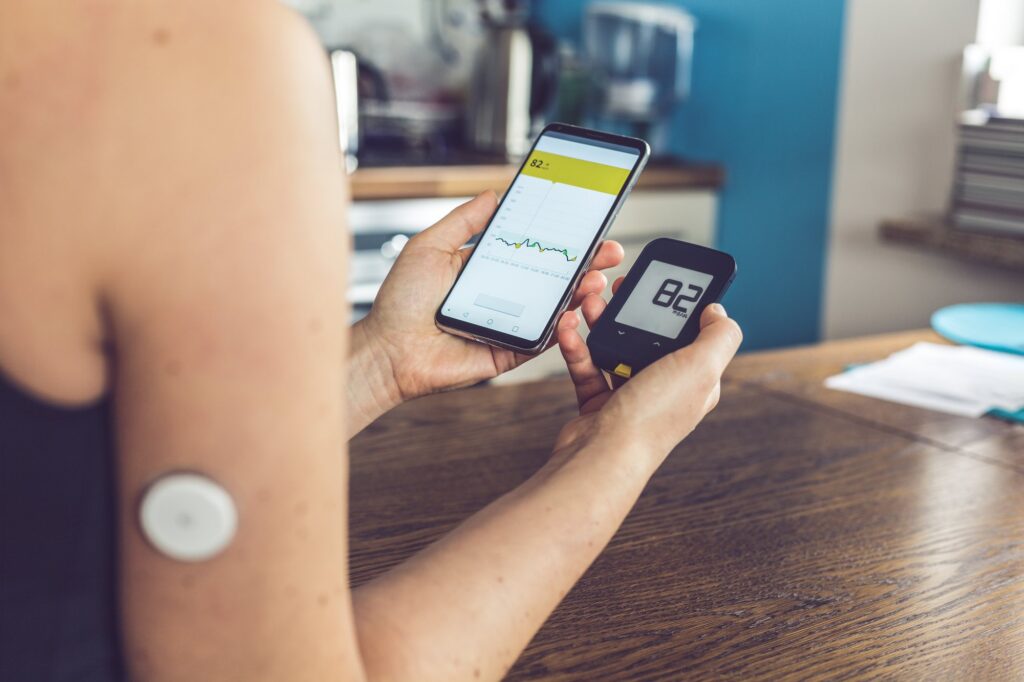Blog
How Wearable Devices Are Changing Personal Healthcare
Wearable devices have transformed the healthcare landscape, offering new ways to monitor, manage, and improve personal health. From fitness trackers to advanced medical wearables, these gadgets empower individuals to take charge of their well-being. As technology continues to evolve, wearable devices are playing an increasingly critical role in personal healthcare. In this article, we’ll explore how wearable technology is reshaping the healthcare industry and its profound impact on individuals’ lives.
1. Real-Time Health Monitoring
One of the most significant advantages of wearable devices is their ability to provide real-time health monitoring. These devices collect data continuously, allowing users to keep track of their vital signs and overall health throughout the day.

Key Metrics Monitored:
- Heart Rate: Wearables like smartwatches and fitness trackers continuously monitor heart rate, helping users detect irregularities such as arrhythmias.
- Blood Oxygen Levels: Advanced wearables include SpO2 sensors to measure oxygen saturation, which can be critical for conditions like sleep apnea or respiratory illnesses.
- Blood Pressure: Compact devices allow for on-the-go monitoring, ensuring users stay within healthy ranges.
Impact:
- Early detection of potential health issues.
- Reduced need for frequent doctor visits.
- Greater awareness of personal health trends.
2. Empowering Preventive Healthcare
Wearable devices are shifting the focus from reactive to preventive healthcare. By identifying patterns and warning signs early, users can take proactive steps to maintain their health.
How Wearables Support Prevention:
- Activity Tracking: Encourages users to stay active by setting goals and reminders for steps, calories burned, and exercise duration.
- Sleep Analysis: Devices like Fitbit and Oura Ring analyze sleep patterns to help users improve rest and recovery.
- Stress Management: Many wearables measure stress levels using heart rate variability (HRV), offering guided breathing exercises to reduce stress.
Benefits:
- Fewer hospital visits due to early interventions.
- Improved long-term health outcomes.
- Enhanced motivation for maintaining healthy habits.
3. Integration with Healthcare Systems
Wearable devices are not just standalone gadgets; they are increasingly integrated with healthcare systems. This connection allows users to share data with healthcare providers, ensuring more accurate diagnoses and personalized treatment plans.
Features of Integration:
- Remote Patient Monitoring (RPM): Physicians can monitor chronic conditions like diabetes or hypertension through wearable data.
- Telehealth Integration: Real-time data from wearables enhances the effectiveness of virtual consultations.
- Electronic Health Records (EHR): Wearable data can be synced with EHRs, giving doctors a comprehensive view of patients’ health.
Real-World Applications:
- Monitoring post-surgery recovery.
- Managing chronic illnesses more effectively.
- Enabling continuous care for elderly or at-risk populations.
4. Personalized Health Insights
Wearable devices use advanced algorithms and artificial intelligence (AI) to provide personalized health insights. These insights are based on the user’s unique data, making recommendations more relevant and actionable.

Examples of Insights:
- Fitness Recommendations: Wearables analyze activity levels and suggest personalized workout plans.
- Dietary Suggestions: Some devices, like metabolic trackers, offer meal recommendations based on activity and metabolic rate.
- Health Alerts: Wearables notify users of potential issues, such as high blood pressure or irregular heartbeats, encouraging timely medical intervention.
Impact on Users:
- Better understanding of individual health needs.
- Increased engagement with health and wellness goals.
- Improved quality of life through tailored advice.
5. Enhancing Chronic Disease Management
Wearable devices have revolutionized chronic disease management by offering continuous monitoring and early detection of health fluctuations. These devices make it easier for patients to manage conditions like diabetes, hypertension, and heart disease.
Features for Chronic Disease Management:
- Glucose Monitoring: Wearable devices like continuous glucose monitors (CGMs) track blood sugar levels in real-time, reducing the need for finger-prick tests.
- Blood Pressure Monitoring: Smartwatches and wearable cuffs help users monitor blood pressure and share data with healthcare providers.
- Medication Reminders: Some wearables remind users to take medications on time, improving adherence.
Outcomes:
- Improved disease management with fewer complications.
- Enhanced patient-doctor communication.
- Reduced healthcare costs through fewer hospitalizations.
6. Promoting Mental Health and Well-Being
In addition to physical health, wearable devices are increasingly focusing on mental health. They use biometric data to assess stress levels, track sleep quality, and encourage mindfulness practices.
Mental Health Features:
- Stress Tracking: Devices like Garmin and WHOOP measure stress levels and offer coping mechanisms like breathing exercises.
- Sleep Optimization: Detailed sleep reports help users identify disruptions and improve rest.
- Mindfulness Support: Wearables guide users through meditation and relaxation sessions.
Benefits:
- Better stress management and emotional balance.
- Improved sleep quality and mental clarity.
- Greater awareness of mental health triggers.
7. Revolutionizing Fitness and Performance
Fitness enthusiasts and athletes have long been fans of wearable devices, and 2024’s advancements make these tools indispensable. From tracking performance metrics to providing real-time feedback, wearables are enhancing fitness experiences like never before.
Performance-Enhancing Features:
- VO2 Max Tracking: Measures cardiovascular fitness to optimize training.
- Recovery Insights: Tracks fatigue and readiness for the next workout.
- Form Correction: Some wearables, like smart gym equipment, offer feedback to improve posture and prevent injuries.
Applications:
- Tailored training programs for athletes.
- Safer workouts with injury prevention tools.
- Motivational features to maintain fitness goals.
8. The Role of AI in Wearable Devices
Artificial intelligence has become a cornerstone of wearable technology, driving smarter, more intuitive features. AI enables these devices to learn from user behavior and adapt recommendations accordingly.
AI-Powered Capabilities:
- Predictive Health Analytics: Forecasts potential health issues based on trends in wearable data.
- Virtual Health Coaches: AI acts as a personal trainer or wellness coach, providing real-time guidance.
- Custom Alerts: Notifies users of unusual metrics, such as spikes in heart rate or sudden drops in activity.
Advantages:
- Greater accuracy in health tracking.
- More meaningful and actionable health insights.
- Enhanced user engagement with dynamic feedback.
9. Challenges and Future Potential
While wearable devices are transforming personal healthcare, they are not without challenges. Issues like data privacy, device accuracy, and accessibility remain hurdles. However, the future holds immense potential as technology continues to advance.
Challenges:
- Data Privacy Concerns: Ensuring user data is securely stored and shared only with consent.
- Accuracy Limitations: Some devices may lack medical-grade precision.
- Cost Barrier: High-tech wearables may not be affordable for everyone.
Future Trends:
- Medical-Grade Wearables: Increasing accuracy to match professional medical devices.
- Broader Accessibility: Lowering costs to make wearables available to a wider audience.
- Integration with Emerging Technologies: Leveraging AR, VR, and IoT to enhance healthcare experiences.
Conclusion
Wearable devices are revolutionizing personal healthcare by making it more accessible, proactive, and personalized. From real-time monitoring to AI-driven insights, these gadgets empower individuals to take control of their health. As technology evolves, wearable devices will continue to play a pivotal role in shaping the future of healthcare, bridging the gap between traditional medicine and everyday wellness. By embracing these innovations, we move closer to a world where optimal health is within everyone’s reach.

